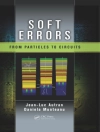This book aims to provide insights on new trends in power systems operation and control and to present, in detail, analysis methods of the power system behavior (mainly its dynamics) as well as the mathematical models for the main components of power plants and the control systems implemented in dispatch centers. Particularly, evaluation methods for rotor angle stability and voltage stability as well as control mechanism of the frequency and voltage are described. Illustrative examples and graphical representations help readers across many disciplines acquire ample knowledge on the respective subjects.
Cuprins
Foreword xxiii
Acknowledgments xxv
Contributors xxvii
1. INTRODUCTION 1
Mircea Eremia and Mohammad Shahidehpour
PART I POWER SYSTEM MODELING AND CONTROL 7
2. SYNCHRONOUS GENERATOR AND INDUCTION MOTOR 9
Mircea Eremia and Constantin Bulac
2.1. Theory and Modeling of Synchronous Generator 9
2.2. Theory and Modeling of the Induction Motor 114
3. MODELING THE MAIN COMPONENTS OF THE CLASSICAL POWER PLANTS 137
Mohammad Shahidehpour, Mircea Eremia, and Lucian Toma
3.1. Introduction 137
3.2. Types of Turbines 138
3.3. Thermal Power Plants 143
3.4. Combined-Cycle Power Plants 158
3.5. Nuclear Power Plants 167
3.6. Hydraulic Power Plants 169
4. WIND POWER GENERATION 179
Mohammad Shahidehpour and Mircea Eremia
4.1. Introduction 179
4.2. Some Characteristics of Wind Power Generation 181
4.3. State of the Art Technologies 184
4.4. Modeling the Wind Turbine Generators 200
4.5. Fault Ride-Through Capability 223
5. SHORT-CIRCUIT CURRENTS CALCULATION 229
Nouredine Hadjsaid, Ion Tri Sstiu, and Lucian Toma
5.1. Introduction 229
5.2. Characteristics of Short-Circuit Currents 232
5.3. Methods of Short-Circuit Currents Calculation 236
5.4. Calculation of Short-Circuit Current Components 264
6. ACTIVE POWER AND FREQUENCY CONTROL 291
Les Pereira
6.1. Introduction 291
6.2. Frequency Deviations in Practice 293
6.3. Typical Standards and Policies for ‘Active Power and Frequency Control’ or ‘Load Frequency Control’ 294
6.4. System Modeling, Inertia, Droop, Regulation, and Dynamic Frequency Response 297
6.5. Governor Modeling 302
6.6. AGC Principles and Modeling 328
6.7. Other Topics of Interest Related to Load Frequency Control 336
7. VOLTAGE AND REACTIVE POWER CONTROL 340
Sandro Corsi and Mircea Eremia
7.1. Relationship Between Active and Reactive Powers and Voltage 342
7.2. Equipments for Voltage and Reactive Power Control 347
7.3. Grid Voltage and Reactive Power Control Methods 374
7.4. Grid Hierarchical Voltage Regulation 399
7.5. Implementation Study of the Secondary Voltage Regulation in Romania 423
7.6. Examples of Hierarchical Voltage Control in the World 429
PART II POWER SYSTEM STABILITY AND PROTECTION 451
8. BACKGROUND OF POWER SYSTEM STABILITY 453
S.S. (Mani) Venkata, Mircea Eremia, and Lucian Toma
8.1. Introduction 453
8.2. Classification of Power Systems Stability 453
8.3. Parallelism Between Voltage Stability and Angular Stability 469
8.4. Importance of Security for Power System Stability 469
9. SMALL-DISTURBANCE ANGLE STABILITY AND ELECTROMECHANICAL OSCILLATION DAMPING 477
Roberto Marconato and Alberto Berizzi
9.1. Introduction 477
9.2. The Dynamic Matrix 478
9.3. A General Simplified Approach 482
9.4. Major Factors Affecting the Damping of Electromechanical Oscillations 501
9.5. Damping Improvement 546
9.6. Typical Cases of Interarea Or Low-Frequency Electromechanical Oscillations 564
10. TRANSIENT STABILITY 570
Nikolai Voropai and Constantin Bulac
10.1. General Aspects 570
10.2. Direct Methods for Transient Stability Assessment 572
10.3. Integration Methods for Transient Stability Assessment 603
10.4. Dynamic Equivalents 614
10.5. Transient Stability Assessment of Large Electric Power Systems 638
10.6. Application 645
11. VOLTAGE STABILITY 657
Mircea Eremia and Constantin Bulac
11.1. Introduction 657
11.2. System Characteristics and Load Modeling 658
11.3. Static Aspects of Voltage Stability 667
11.4. Voltage Instability Mechanisms: Interaction Between Electrical Network, Loads, and Control Devices 674
11.5. Voltage Stability Assessment Methods 688
11.6. Voltage Instability Countermeasures 716
11.7. Application 724
12. POWER SYSTEM PROTECTION 737
Klaus-Peter Brand and Ivan De Mesmaeker
12.1. Introduction 737
12.2. Summary of IEC 61850 744
12.3. The Protection Chain in Details 746
12.4. Transmission and Distribution Power System Structures 753
12.5. Properties of the Three-Phase Systems Relevant for Protection 755
12.6. Protection Functions Sorted According to the Objects Protected 759
12.7. From Single Protection Functions to System Protection 773
12.8. Conclusions 780
PART III GRID BLACKOUTS AND RESTORATION PROCESS 787
13. MAJOR GRID BLACKOUTS: ANALYSIS, CLASSIFICATION, AND PREVENTION 789
Yvon Besanger, Mircea Eremia, and Nikolai Voropai
13.1. Introduction 789
13.2. Description of Some Previous Blackouts 792
13.3. Analysis of Blackouts 835
13.4. Economical and Social Effects 847
13.5. Recommendations for Preventing Blackouts 849
13.6. On Some Defense and Restoration Actions 850
13.7. Survivability/vulnerability of Electric Power Systems 856
13.8. Conclusions 860
14. RESTORATION PROCESSES AFTER BLACKOUTS 864
Alberto Borghetti, Carlo Alberto Nucci, and Mario Paolone
14.1. Introduction 864
14.2. Overview of The Restoration Process 865
14.3. Black-Start-Up Capabilities of Thermal Power Plant: Modeling and Computer Simulations 869
14.4. Description of Computer Simulators 888
14.5. Concluding Remarks 896
15. COMPUTER SIMULATION OF SCALE-BRIDGING TRANSIENTS IN POWER SYSTEMS 900
Kai Strunz and Feng Gao
15.1. Bridging of Instantaneous and Phasor Signals 901
15.2. Network Modeling 903
15.3. Modeling of Power System Components 909
15.4. Application: Simulation of Blackout 923
References 926
Index 929
Despre autor
MIRCEA EREMIA, Ph D, is Full Professor in the Electrical Power Systems Department at the University Politehnica of Bucharest. He has authored or coauthored more than 150 journal and conference papers as well as ten books in the field of electric power systems. Professor Eremia has extensive experience in power system analysis and engineering education.
MOHAMMAD SHAHIDEHPOUR, Ph D, is Bodine Chair Professor in the Electrical and Computer Engineering Department and Director of the Robert W. Galvin Center for Electricity Innovation at Illinois Institute of Technology in Chicago. He is Editor-in-Chief of IEEE Transactions on Smart Grid and an editorial board member of IEEE Power and Energy Magazine.












